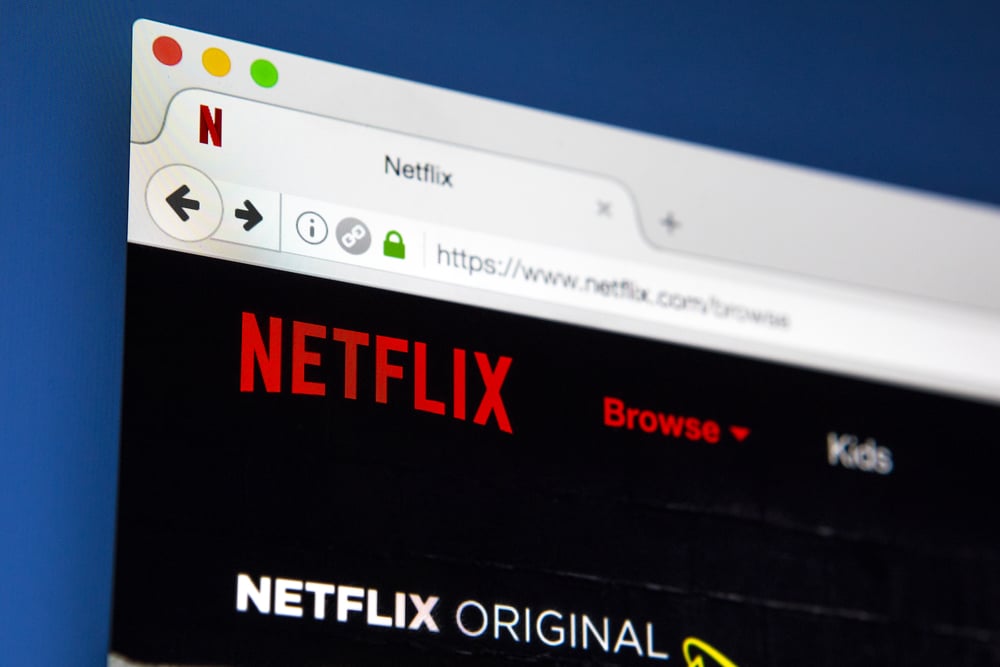
The quarterly earnings seasons are among the most important times of the year for investors. For most of the year, stock prices move based on speculation (i.e. what investors “think” will happen). When companies deliver their financial report cards to investors, speculation becomes reality. If the company posts results that beat expectations, their stock can be rewarded. The opposite is true if they miss on expectations.
But there’s more to an earnings report than a review of the company’s current balance sheet. Analysts use earnings reports and the related conference calls to get important information on a company’s long-term outlook. Take Netflix for example. In its most recent earnings report on July 17, Netflix (NASDAQ: NFLX) reported financials that were not bad. The company’s year-over-year revenue grew just over one billion dollars to $4.92 billion with earnings per share (EPS) coming in at $0.60. Analysts had expected a $0.56 EPS on $4.9 billion in revenue.
Then why did the stock drop almost 12% in after-hours trading?
Earnings reports will confirm more than surprise
In a 24-hour news cycle, it’s very difficult for a company to keep information away from investors. For the most part, issues that may affect a company’s quarterly earnings are “leaked” to the financial press well in advance of the release of the earnings report.
For months investors had been hearing about the likelihood that Netflix would report a declining subscriber base. Apple and Disney are getting ready to announce their own streaming services later this year and AT&T’s HBO Max and Comcast Corp’s NBC Universal services are set to launch in 2020. In addition to more competitors entering or announcing plans to enter the streaming content arena, the arrival of these competitors is changing licensing agreements that will mean Netflix will lose two of its most popular syndicated programs, “The Office” and “Friends”.
So it was not a surprise that Netflix was seeing a decline in new and current subscribers. However, the report confirmed the size of the loss. When the actual number of new subscribers (2.7 million) came in well below analysts’ (and the company’s) expectations of just over 5 million and coincided with an unexpected decline in U.S. subscribers, the bears saw an opportunity to take some profits.
You should respond, not react, to earnings reports
Investors should look at an earnings report with one eye on the company’s past and one eye towards its future. Good companies don’t turn bad overnight or vice versa. In this digital age where companies keep a history of earnings reports on their web site, it’s easy for investors to compare a current earnings report with prior quarters or the same quarter in the prior year. This is what stock analysts do when they deliver their recommendations for a stock. However, even with access to the same information, analysts don’t always agree.
In the case of Netflix, the majority of analysts are maintaining a buy or outperform rating for the streaming giant. They base their assessments on previous years which indicate that Q2 has been a historically bad quarter for Netflix. The takeaway? Netflix has had bad second quarters in the past and they are usually followed by strong quarters to close out the year. Other analysts point to the Netflix model of delivering original content. With many new seasons of some of their most popular original series set to launch, analysts see a compelling reason for customers to keep binging on Netflix.
However, some analysts are seeing the confirmation of a decline in subscriber growth as an indicator that the competitive threats will create a crowded market for future growth. They look at a finite subscriber base that limits the options for Netflix to grow.
For the most part, if you believe in the fundamentals of the company than you should be careful not to overreact to stock price movement after the release of an earnings report.
Do we still need to see quarterly earnings?
Quarterly earnings reports came about as a result of the Securities Act of 1934. The objective was to provide more transparency since a lack of information to company financials was cited as one of the primary causes of the Great Depression. Company CEOs and some politicians are calling for a longer time between earnings reports. The thinking is that since most of what is in an earnings report are just a confirmation of what analysts and investors have already pieced together, it does not benefit the average investor because by the time the report is released the stock price already reflects the information contained. The argument continues that it would be better for companies to have a longer timeframe and not be so beholden to short-term performance figures. And there is some anecdotal evidence that suggests more private companies might go public if they knew they only had to report twice a year. However, most analysts and investors are concerned that allowing more time to pass between earnings reports would make the U.S. capital markets, which are regarded as among the most liquid and safest in the world, less fair and transparent.
Before you make your next trade, you'll want to hear this.
MarketBeat keeps track of Wall Street's top-rated and best performing research analysts and the stocks they recommend to their clients on a daily basis.
Our team has identified the five stocks that top analysts are quietly whispering to their clients to buy now before the broader market catches on... and none of the big name stocks were on the list.
They believe these five stocks are the five best companies for investors to buy now...
See The Five Stocks Here
Enter your email address and we'll send you MarketBeat's list of seven stocks and why their long-term outlooks are very promising.
Get This Free Report
Like this article? Share it with a colleague.
Link copied to clipboard.